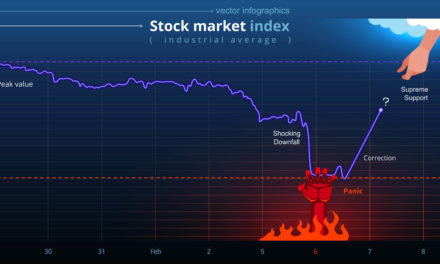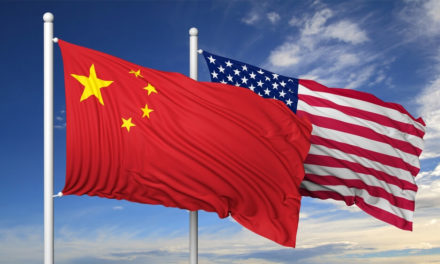An escalating showdown between the U.S. and China over trade sent shudders through the stock market, handing the S&P 500 is biggest loss since late March and more in Tuesday’s Stock Market Update.
Technology and industrial stocks, which do a lot of business with China and would stand to suffer greatly in a protracted trade war, led the way lower on Tuesday. Apple lost 2.7% and United Technologies fell 3.4%.
Safe-play sectors like utilities held up better than the rest of the market.
The U.S. was set to impose higher tariffs on China on Friday, a day after representatives from both nations were scheduled to resume trade talks Thursday in Washington.
The looming deadline followed President Donald Trump’s threat on Sunday to raise tariffs on China in a bid to pressure Beijing to reach a long-sought resolution to the trade conflict between the world’s two biggest economies. The ongoing feud has raised costs on goods for consumers and companies.
The U.S. and China have raised tariffs on tens of billions of dollars of each other’s goods in their dispute over U.S. complaints about Chinese technology ambitions.
Washington has accused Beijing of reneging on its commitments and is preparing to raise import taxes on $200 billion of Chinese goods to 25% from 10%, and to impose tariffs on another $325 billion in imports, covering everything the country ships annually to the United States.
The possibility that the trade dispute could escalate represents a marked shift from just a few weeks ago, when talks between the U.S. and China appeared to be on track for an agreement. That expectation helped boost the stock market’s rally this year.
Jitters over the tougher rhetoric from the U.S. on trade sent the market sharply lower Monday, though the sell-off lost momentum by the end of the day. On Tuesday, the wave of selling intensified as the day went on.
DAILY STOCK MARKET UPDATE
KEEPING SCORE: The S&P 500 fell 48 points, or 1.7%, to 2,884. The Dow fell 473 points, or 1.8%, to 25,965. The index was briefly down 607 points. The Nasdaq composite, which is heavily weighted with technology stocks, fell 159 points, or 2%, to 7,963. Major indexes in Europe also fell.
The rout is the first big jolt for stocks since the turn of the year, when fear began draining out of the market and the S&P 500 started its march back to record heights.
For months, the S&P 500 climbed steadily as worry after worry that had hounded investors late last year seemed to dissipate. Chiefly, the Federal Reserve promised to take a patient approach with interest rates. That calmed investors who had worried the Fed would push the economy into a recession by raising rates too aggressively. Economic data also improved in the United States and China, which encouraged investors.
The big rise in stocks since the beginning of the year partly reflects complacence among investors, said Mark Hackett, chief of investment research for Nationwide Investment Management.
“We’ve basically flipped from being too pessimistic to perhaps being too optimistic,” he said.
It’s only the third time this year that the index has lost at least 1.5%. Last year saw 23 such days, with many clustered in the final few months.
Tuesday’s selling was also relatively indiscriminate, and 95% of the companies in the S&P 500 declined.
The trade dispute between China and the United States is nothing new, and it had been hanging over the market even as the S&P 500 made its run to a record this year. But investors had been willing to push stocks higher despite it because they largely assumed a deal would eventually get done. That showed in share prices of U.S. companies that get big portions of their sales from China, which had done better than the rest of the market, according to analysts at Jefferies.
Trump’s threat of additional tariffs is forcing investors to reassess those expectations. One measure of fear in the market, which tracks how much traders are paying to buy protection from price swings in the S&P 500, had its biggest jump Tuesday in nearly seven months. It still remains low by historical standards, though, after earlier in the year dropping by more than half since the end of 2018.
Every sector fell. Technology companies, which tend to do a lot of business with China and would suffer greatly in a protracted trade war, led the decline. Utilities, normally safe-play holdings for investors, fared better than the rest of the market. Bond prices also rose as investors sought out other ways to reduce risk.
It’s yet to be determined whether the brinksmanship tactics from the Trump administration will help or hurt the prospects of a deal getting done quickly, something that investors want.
“This is such a short period of time that it’s hard to speculate whether this will cause something to get done quickly or whether it will drag on for months,” said Scott Wren, senior global equity strategist at Wells Fargo Investment Institute.
Western Digital was among the biggest decliners in the technology sector, dropping 4.7%. Apple fell 2.7% and Microsoft slid 2%. JPMorgan Chase fell 1.6% and Bank of America gave up 0.1%.
© The Associated Press. All rights reserved.




